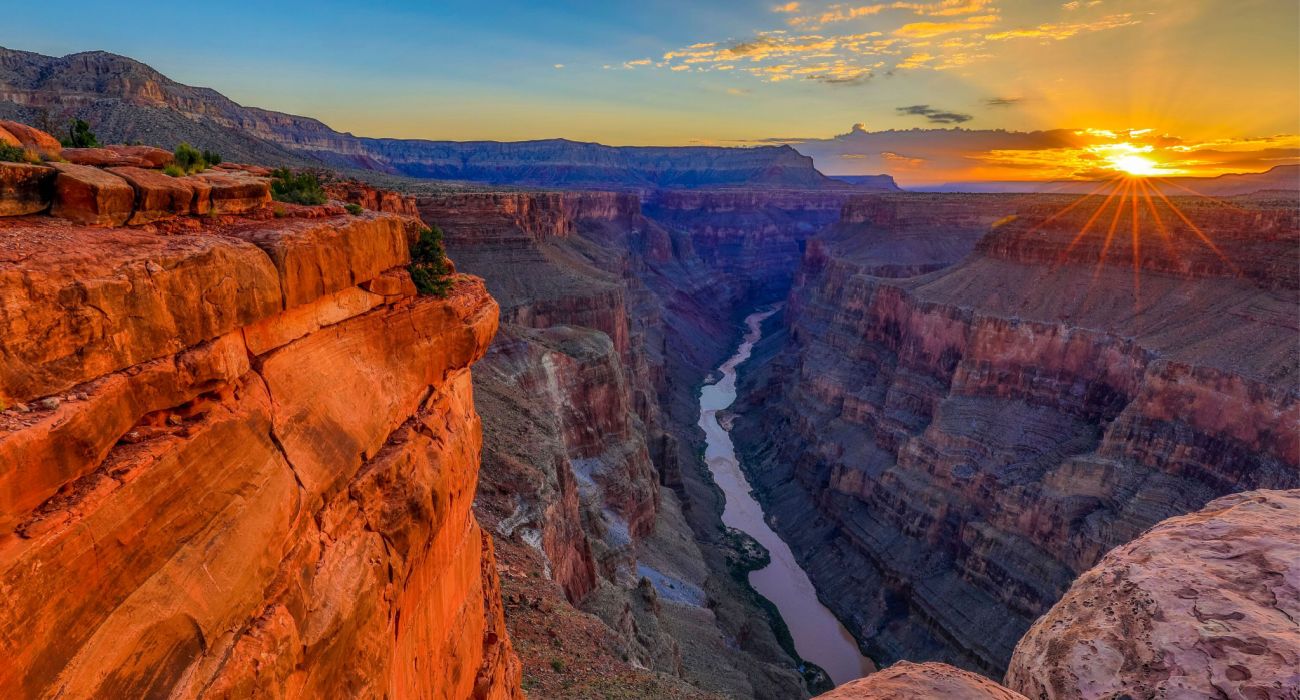Quick Links
While the Colorado River has "only" been gouging out the Grand Canyon for 5 to 6 million years, the rocks that have been exposed are up to two billion years old in places (the Earth is around 4.5 billion years old). That means the Grand Canyon is a geological record and timeline deep into Earth's geological history.
The Trail of Time extends along the paved Rim Trail between the Yavapai Geology Museum and Maricopa Point and is a must for those visiting the Grand Canyon. Visit the Grand Canyon in the fall, and enjoy the more pleasant temperatures as one walks along the rim of the canyon.
The Grand Canyon Is A Window Into The Deep Geologic History Of Earth
Two billion years ago, the Earth was a very different place. It was the Paleoproterozoic era, and life was a lot simpler (the first multicellular life was only just beginning to take shape). Days were even around four hours shorter, and the atmosphere lacked a large amount of oxygen. The world's first supercontinent, called Columbia or Nuna, was in the process of being formed.
- Age of Grand Canyon: 5-6 Million Years
- Age of Grand Canyon Rock: Up To 2 Billion Years
As the Colorado Plateau has been uplifted, the Colorado River has cut down through the eons of time.
Discover the rich geological history of the Grand Canyon with the Trail of Time.
As one looks into the Grand Canyon, one is gazing through the eons, deep into the history of the Earth (long before the dinosaurs).
There are many places visitors can learn about the geologic history of North America. In the Great Plains, learn about the vast inland sea that once split the continent in two. In Alaska, the Bering Land Bridge National Preserve protects a remnant of the land bridge that once connected North America with Asia.
Walk Backwards 1 Billion Years In Time
"Walking the trail gives you a visceral appreciation for the magnitude of geologic time. Bronze markers mark your location in time; every tenth marker is labeled in millions of year!"
The Trail of Time is lined with a series of rocks and exhibits that delve into how the Grand Canyon was formed - and its bedrock long before the canyon itself. It is the world's largest geoscience exhibition in full view of one of the world's greatest geologic marvels (the Grand Canyon).
The Trail of Time is intended to be a geologic timeline, with every meter walked along the timeline trail signifying a million years of geologic history. The interpretive walking trail encourages visitors to explore, understand, and ponder the magnitude of geologic time.
Walk backward in time and see the Grand Canyon's entire geologic history. Trail of Time starts with the "Million Year Trail" and see how it transitions from human time scales to geologic time scales. After the Million Year Trail follows the main Trail of Time - it is along this trail that every meter is one million years of geologic history.
The depth of the geologic history of Earth will make mankind's existence on Earth seem fleeting.
What To Know About Planning A Hike Of The Trail Of Time
The Trail of Time is located at the Yavapai Geology Museum. The Yavapai Geology Museum is only a half-hour walk from Mather Point and the Canyon View Visitor Center. The Trail of Time leads past the Grand Canyon Village. Visitors can choose to stop in the Village, take a break and get a coffee or a bite to eat or keep on walking straight all the way towards Hermits Rest.
- Starting Point: Yavapai Geology Museum
- Total Length: 4.56 Kilometers or 2.83 Miles
- Million Year Trail: 2.1 km or 1.3 Miles
- Accessibility: Fully Accessible
The trail is paved, 4.56 kilometers or 2.83 miles long, and is relatively flat.
The trail is fully accessible. The Grand Canyon welcomes around six million visitors, and most of them are unable to hike down into the Grand Canyon. The Trail of Time is designed for everyone and offers breathtaking views of the Grand Canyon.
But the ultimate trail in the Grand Canyon is taking a mule ride all the way to the bottom (although people need to plan long in advance for these trips).

